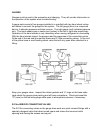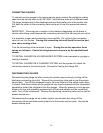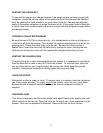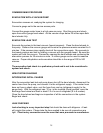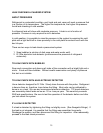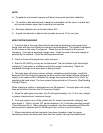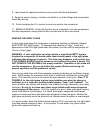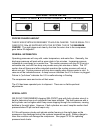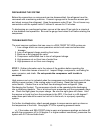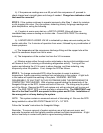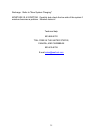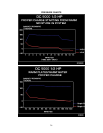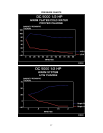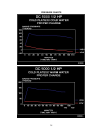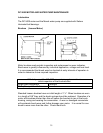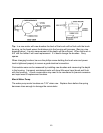33
DISCHARGING THE SYSTEM
Before the connections or components can be disassembled, the refrigerant must be
recovered with a reclaiming machine. Connect a gauge set to the suction access port
and slowly recover the refrigerant. Keep the pressure under 20 psi. Do not loosen any
connections until the system holds 10 inches of vacuum for 10 minutes.
To discharging an overcharged system; recover at the same 20 psi rate for a minute at
a time between test operations. Be sure the gauge hand wheel is off before starting the
compressor.
TROUBLESHOOTING
The most common problems that can occur in a SEA FROST DC 5000 system are:
1. Low voltage which can cause premature motor brush wear and commutator
damage.
2. Loss of refrigerant charge resulting from leaks.
3. Moisture or dirt plugging the valve.
4. Compressor malfunction due to loss of refrigerant charge.
5. High pressure cut out from loss of water flow.
6. High pressure cut out from over charging.
STEP 1. Gather information as to the nature of the problem before operating the
system. A leak often leaves a trace of oil. Inspect fittings, components, and tubing for
wear, corrosion, and chafe. Do not operate the compressor until trouble is
corrected.
High pressure cut-out is indicated when the compressor and indicator lamp turn off after
starting a warm system, if the cooling water is not flowing. Reset the high-pressure
cutout switch. If water flow is not at fault then discharge some refrigerant. (See
Discharging the System) The compressor should not be operated while discharging
into a reclaiming machine. This is a trial and error procedure until the compressor stays
on. Check the sight glass for proper charge. Be sure the sight glass still clears. Hold
the receiver or liquid line from the condenser to the RFD, If the boat is in 80 degree F.
water these parts should be warm but not hot to the touch, in a properly operating
system.
For further troubleshooting, attach purged gauges to access service ports or observe
the temperature of the lines. See pages 37-38 for operating pressure trends.
a) If the icebox and SEA FROST plate is warm and pressure readings are below 50
psi with the compressor off (in 50 degree F or higher ambient conditions), pressurize the
system with R-134a and leak-check.



